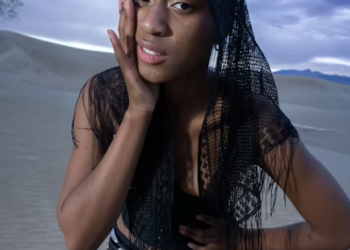Gender-neutral fashion has emerged as a powerful movement within the fashion industry, challenging traditional norms and stereotypes surrounding clothing. In this article, we’ll explore the rise of gender-neutral fashion, its historical context, industry response, and future trends.
Introduction to Gender-Neutral Fashion
Gender-neutral fashion, also known as unisex or gender-fluid fashion, refers to clothing that is designed to be worn by individuals of any gender. This approach to fashion emphasizes inclusivity, self-expression, and breaking down barriers between genders. Gender-neutral fashion offers individuals the freedom to express themselves authentically without being confined by traditional gender norms.
Historical Context
The concept of gender-neutral fashion is not new and has roots in the historical evolution of fashion. Throughout history, there have been instances of clothing styles and designs that transcended gender boundaries, particularly in cultures where clothing was less rigidly defined by gender roles. However, it wasn’t until recent years that gender-neutral fashion gained mainstream recognition and acceptance within the fashion industry.
Breaking Stereotypes
One of the key drivers behind the rise of gender-neutral fashion is the desire to challenge and break down traditional stereotypes and gender roles. By offering clothing options that are not limited by gender, gender-neutral fashion empowers individuals to express themselves freely and authentically. This shift in perspective has sparked conversations about inclusivity and diversity within the fashion industry, prompting designers and brands to reconsider their approach to design and marketing.
Celebrities and Influencers
Celebrities and influencers have played a significant role in popularizing gender-neutral fashion and driving awareness of the movement. From actors and musicians to fashion icons and social media influencers, high-profile individuals have been seen embracing gender-neutral styles and advocating for greater inclusivity in fashion. Their influence has helped to normalize gender-neutral fashion and inspire fans and followers to explore non-binary clothing options.
Industry Response
The fashion industry has responded to the rise of gender-neutral fashion with a wave of inclusivity and creativity. Many brands and designers have introduced gender-neutral collections or expanded their existing offerings to cater to a diverse range of customers. This shift in the industry reflects a growing recognition of the importance of diversity and representation in fashion, as well as a desire to meet the evolving needs and preferences of consumers.
Impact on Retail
The rise of gender-neutral fashion has also had an impact on retail spaces, with many stores and online retailers rethinking their approach to merchandising and marketing. Retailers are increasingly blurring the lines between traditional men’s and women’s sections, creating gender-neutral shopping environments that cater to all customers regardless of gender identity. This shift towards gender-neutral retail spaces reflects a broader cultural shift towards inclusivity and acceptance.
Social and Cultural Implications
Beyond its impact on the fashion industry, gender-neutral fashion has significant social and cultural implications. By challenging traditional notions of gender and identity, gender-neutral fashion has the potential to foster greater acceptance and understanding of diverse identities within society. It promotes a message of inclusivity and empowerment, encouraging individuals to embrace their unique identities and express themselves authentically.
Challenges and Opportunities
While the rise of gender-neutral fashion represents progress towards greater inclusivity and diversity in the fashion industry, it also poses challenges and opportunities for brands and designers. One challenge is navigating the complexities of gender identity and ensuring that gender-neutral fashion remains truly inclusive and accessible to all individuals. However, there are also opportunities for brands to differentiate themselves in the market and connect with consumers on a deeper level by embracing gender-neutral principles in their designs and marketing efforts.
Future Trends
Looking ahead, the future of gender-neutral fashion looks promising. As society becomes increasingly aware of and sensitive to issues of gender identity and representation, the demand for gender-neutral clothing is likely to continue growing. Brands that embrace inclusivity and diversity in their designs and messaging will be well-positioned to thrive in this evolving landscape. The fashion industry has the opportunity to lead the way in promoting acceptance and understanding of diverse identities, setting a positive example for other industries to follow.
Conclusion
In conclusion, the rise of gender-neutral fashion represents a significant shift in the fashion industry towards greater inclusivity and diversity. By challenging traditional norms and stereotypes, gender-neutral fashion empowers individuals to express themselves authentically and without limitations. As the movement continues to gain momentum, it has the potential to reshape the fashion industry and promote acceptance and understanding of diverse identities within society.

FAQs
- What is gender-neutral fashion?
- Gender-neutral fashion, also known as unisex or gender-fluid fashion, refers to clothing that is designed to be worn by individuals of any gender, without being limited by traditional gender norms.
- Why has gender-neutral fashion become popular?
- Gender-neutral fashion has become popular as a response to the desire for greater inclusivity and diversity in the fashion industry, as well as a recognition of the fluidity of gender identity.
- How do celebrities influence the rise of gender-neutral fashion?
- Celebrities play a significant role in popularizing gender-neutral fashion by wearing gender-neutral styles and advocating for greater inclusivity in the fashion industry.
- What are some examples of gender-neutral clothing?
- Examples of gender-neutral clothing include items such as t-shirts, jeans, hoodies, and sneakers that are designed to be worn by individuals of any gender.
- What are some challenges facing the gender-neutral fashion movement?
- Challenges facing the gender-neutral fashion movement include navigating the complexities of gender identity, ensuring inclusivity, and addressing resistance from traditional fashion norms.






